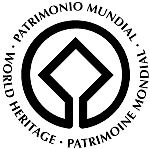World Heritage Site
- 복사
-
모바일로 QR코드를 스캔하면
이 페이지로 바로 접속 할 수있습니다.
World Heritage Site
Heritage is legacy from the past, what we live with today, and what we pass on to future generations.
Our cultural and natural heritage are both irreplaceable sources of life and inspiration.
The forms of heritage are unique and diverse. They may include various types, such as the Serengeti Plains in Tanzania, Africa, the pyramids in Egypt, coral reefs in Australia, and the Baroque Cathedrals in Southern America. What makes the concept of "World Heritage" exceptional is its universal application. World Heritage sites belong to all the peoples of the world, irrespective of the territory on which they are located.
UNESCO seeks to encourage the identification, protection and preservation of cultural and natural heritage around the world considered to be of outstanding value to humanity. This is embodied in an international treaty called the Convention Concerning the Protection of the World Cultural and Natural Heritage (WHC), adopted by UNESCO in 1972.
Definition of
World Heritage
World heritage is the designation for places with
excellent preservation value stipulated by the WHC,
classified as cultural heritage, natural heritage, and
mixed heritage.
-
Culture Heritage
- Monuments architectural works, works of monumental sculpture and painting, elements or structures of an archaeological nature, inscriptions, cave dwellings and combinations of features, which are of outstanding universal value from the point of view of history, art or science
- Groups of buildings groups of separate or connected buildings of outstanding universal value from the point of view of history, art or science
- Sites works of human or the combined works of nature and of human, and areas including archaeological sites which are of outstanding universal value from the historical, aesthetic, ethnological or anthropological points of view
-
Natural Heritage
- Natural features consisting of physical and biological formations or groups of such formations, which are of outstanding universal value from the aesthetic or scientific point of view
- Geological and physiographical formations and precisely delineated areas which constitute the habitat of threatened species of animals and plants of outstanding universal value from the point of view of science or conservation
- Natural sites or precisely delineated natural areas of outstanding universal value from the point of view of science, conservation or natural beauty
-
Mixed Heritage
- Heritage that matches the characteristics of both cultural and natural heritage
World Heritage Emblem

The World Heritage Emblem is used to identify properties protected by the World Heritage Convention and inscribed on the official World Heritage List, and represents the universal values for which the Convention stands.
Designed by Belgian artist Michel Olyff, it was adopted as the official emblem in 1978.
While the central square symbolizes the results of human skill and inspiration, the circle celebrates the gifts of nature. The square and circle are connected, signifying the meaning that humans and the nature are intertwined beings. The round symbol represents the world, with the meaning of global protection for the heritage of all humankind.
Key principles in utilization of designs symbolizing world heritage
- The emblem should be utilized for all projects substantially associated with the work of the Convention.
- A decision to approve the use of the emblem should be linked strongly to the quality and content of the product; the use of the emblem for commercial use is prohibited.
- The main criterion for approval should be the educational, scientific, cultural, or artistic value of the proposed product related to World Heritage principles and values. Approval should not routinely be granted to place the emblem on products that have no, or extremely little, educational value, such as cups and T-shirts. However, in exceptional cases where there are special events, such as committee meetings, the Emblem may be used for such purposes.
- Permission to use the emblem should not be granted to travel agencies, airlines, or to any other type of business operating for predominantly commercial purposes, except under exceptional circumstances and when manifest benefit to the World Heritage generally or particular World Heritage properties can be demonstrated.
- When financial gains is inevitably expected, the World Heritage Center shall write a contract or other forms of agreement that clarifies the relevant content.
- In cases where no specific World Heritage properties are involved or are not the principal focus of the proposed use, such as general seminars and/or workshops on scientific issues or conservation techniques, use may be granted only upon express approval in accordance with related guidelines and principles. Requests for such uses should specifically document the manner in which the proposed use is expected to enhance the work of the Convention.
